My whole life has led me to moments like this.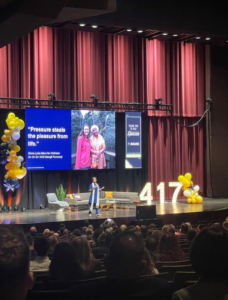
I’ve done over 30 keynotes in the last several months and I wanted to share some of the lessons I’ve learned from them (and a lifetime of speaking on stages):
1. Every person listening to a talk wants to be engaged. And they have the attention span of a goldfish. You must engage them with exercises, questions, and check ins at least every three minutes of your talk or you’ll lose them. Even just a simple, “are you following me? Is this making sense?” Is enough to get a response. I’m ok if all they say is yes, it shows me they’re engaged.
2. People’s favorite word to hear is the sound of their own name. Before I speak I’ll go through the crowd asking for people’s names and what they would like to take away from the event. This makes them feel heard, surprises them that the speaker even cares about them, and thrills them to the hilt when I reference their name from stage on points that are relevant to them. It also makes the crowd feel like I’m an old friend because I know so many people there, when 99% of the time I just met them.
3. People will retain a far greater percentage of what you’re saying if they see it and hear it. That’s why if I have a 90 minute keynote, I’ll typically have roughly 82 slides to go alongside it. I very commonly hear that people took pictures of nearly every slide they were so engaged. -Keep them at the edge of their seats and they’ll love you for it.
To hear the remaining 6 tune into this week’s episode.
Continued Learning: How to Make a Killer Presentation That Literally Triples Sales
- Want to know what’s keeping you from doubling your sales in the next 12 months? Take our quick QUIZ to get answers: Howtodoublesales.com
- If you’d like to have a profound breakthrough in your business, schedule your breakthrough call with a LIVE expert here: Chetholmes.com/Breakthrough
- Claim your FREE chapter 4 from the top 10 most recommended marketing and sales books of all time! Visit: Ultimatesalesmachine.com to find out how you Create 9X More Impact from every move you’re already making to win clients!
TRANSCRIPT:
*this transcript was mostly generated by AI, please excuse any mistakes 
Amanda: [00:00:00] Welcome to your weekly dose of the Ultimate Sales Machine. This week’s episode, I had posted something on my Facebook page and I got a bunch of loves and comments saying that they really got a lot of value, and I’ve been hearing it for the last week, so I thought maybe I would share it with you via podcast.
Here is your daily dose of the Ultimate Sales machine coming to you from the new edition. Visit ultimate sales machine.com to get your copy or multiple copies. I am your host, Amanda Holmes, CEO of Chet Holmes International. What you’re about to learn has assisted a quarter of a million businesses to generate billions of dollars working faster, better, smarter.
Now this post that got a lot of following, a lot of people printed it out, put it on their wall, and told me that they were printing it out, which meant a lot to me. And one person commented and said, Amanda, how could you have decades of experience on stage? You’re not old enough to have decades of experience and.
I said, oh, that’s really funny. Yeah. 25, [00:01:00] 28 years of experience on stages. It’s because I started when I was seven. I literally have always gravitated. I was the first one to be the lead in the school play four years before I was fifth grader, which was the highest grade. So all the four, third, fourth and fifth grade girls were so jealous of me that I got Dorothy in the Wizard of Oz.
Multiple times did I sit on a student body because I was on stages. Then I went to music where I played everywhere. They would give me a chance, I would even set up a seat in my college dorm, in the elevator so that every time people would come in, I would have to have a captive audience where they would have to sit and listen to me for however many floors it took them to get into their dorm so that I could practice singing different songs for them and see what landed.
So I have been obsessed. With the art of collecting multiple people together and speaking, singing, acting, that was the only [00:02:00] skill that I had from my prior years of. Learning that assisted me when I inherited my father’s business. And then I started running webinars, and that’s how we doubled our coaching clients multiple years in a row, was because I just took the script that my father had around how to double sales, and I started delivering that.
Gosh, I don’t know where I got that gumption. It’s terrifying to me now thinking back what I did in my mid twenties. But yes, so this comes from decades of experience. Every place that I could get on stage, I have, and I wanna give you these tips because it can be a really scary thing to get up on stage.
And I found that a lot of people have found this valuable. So here you go.
Amanda: Number one, every person listening to a talk wants to be engaged and they have the attention span of a goldfish. Let’s just assume that it is seven seconds. I think it’s more like three. But different sources online go between three and seven seconds.
[00:03:00] So if they have the attention of a goldfish, you need to grab their attention and check in at least every three minutes. Or you’ll lose them.
Exercises, questions, even just a simple,
are you following me?
Is this making sense?
Even just a yes. If I hear a yes, then I know that they’re engaged. I learned this from Dave Van Hoss back in the day when I was running webinars consistently, and when he would run a webinar, everyone else would maybe get like 12, 15 comments in a webinar.
The same amount of people. He’d have 500 comments because he’d perpetually be asking questions for people to answer Short. Quick, easy answers. So I’m perpetually checking in with the audience, getting them engaged, having them interact. So number one.
Number two, people’s favorite word to hear is the sound of their own name.
Before I speak, I’ll go through the crowd asking people’s names and what they would like to take away from the event. This makes them feel heard. It surprises them that the speaker even cares enough to want to [00:04:00] hear from them. I’m approaching every person, hi, what’s your name? And they look at me like, oh, I’m glad somebody’s talking to me.
Then I ask, what do you want from this event? And they look at me like, huh. And I’m like, I’m speaking. In just about 20 minutes, I’d love to know. So just 20 minutes before the talk, I’m going through the audience. I’m speed networking, just meeting as many people as possible, getting as many names as possible, and it really helps me craft the talk that I’m about to give very specifically to the people in the audience, because I’m getting a better idea of who is in that audience, what they’re really looking for.
So then when I’m on stage, it tickles them pink. If I’m talking and I’m saying, Hey Bob, remember what you told me about trying to get your sales team all on one page? This next piece is perfect for that. So pay attention. Or then I’m saying, and when I talked to Susie, she said, A hard thing is she just can’t get anybody to listen to her.
Nobody’s booking an appointment. This next exercise is gonna be perfect for that. So I am calling out to people so they think the whole room feels like I’m their best friend, cuz I know all of these people’s [00:05:00] names in the audience. When 99% of the time I haven’t met any of them until 20 minutes before I go on stage.
I learned this from the CEO of Walmart. I heard a story about how he would make up people’s names and he’d go up for his keynotes and he’d say, and Billy, you remember that time? And he’d tell a story and he’d fabricate these people. And I thought that was hilarious. And I thought, oh my God, I have to do that, but I have to get their actual names.
So a great way to engage with an audience.
Third people will retain a far greater percentage of what you’re saying if they see it and they hear it. That’s why like at HubSpot, I give a 90 minute keynote. I had 83 slides for 90 minutes. I am telling you, and this is, I learned this from my father on his.
Effective rules for presenting. Every minute you should have a new piece of information that they’re seeing that they’re digesting, that’s helping them understand. And I’ll tell you right now, I have people that come up to me that say, I literally took a picture of every slide you had if you engage them and keep them at the edge of their seats.
[00:06:00] they’ll Love you for it.
Number four, there’s nothing that crowds love more than humility and transparency.
So I used to boast about how great I was and how great our clients were, but I had this one keynote for a company by the name of r n s. They’re pharmaceutical sales. They’re right around half a billion in sales.
And normally when I’m speaking for a room, it’s most, I would, majority of the time, it’s 90 to 95% male. Baby Boomer age. So what was different about this particular keynote is that I looked out and it was a room full of women my age that it was shocking, twenties and 30 year old women.
And I never speak to that age range. And I just kept thinking, how can I impact this room and really give them something that they need to know. So for the first time ever I shared how. Dark and desperate and difficult. It was when I first inherited the business, the, to the extent of [00:07:00] my depression and my anxiety and my inability to sleep and all of this, and I shared it with them and I had people crying in the audience.
And, I managed to segue back into the business and because of that, people were more open and we had a great time. And after that I got a standing ovation and I realized, People love humanity. You have to be human and people appreciate humanity. So that was a huge shift that happened to me and I’ve done it ever since.
How can you be vulnerable? How can you be transparent? Because the struggles you once had, that you’ve solved can be, can perfectly attract the people that are in that right now.
Okay, number five. Too often, my gosh, this really pains me when people just pontificate from stage with ideas, but very little structure about what’s going on.
So if you want it to stick with them, please give them frameworks, something memorable that they can remember or draw. people remember the Dream 100 concept [00:08:00] years later, right? Because my father put a name to it. We have for since time immemorial gone whale hunting where we searched for big deals.
But the way that my father told a story and backed it up with a title and then proved it himself and then started approving it with clients, he indoctrinated his own framework so that people would remember him for the Dream 100. So what are you doing to build out something like that for me? I even saw somebody take a selfie with someone, you well with networking, and then got their cell phone number to text it to them.
And I said, that’s bloody brilliant. We need to put a name to it. We called it the Signature Selfie. That was Louis Garcia and I’ve been teaching that ever since. And I’ll tell you during my keynote in. The hour to an hour and a half of me talking people will generate enterprise level leads because they’re taking pictures with the person sitting next to them, and more often than not, that’s the fastest thing that people get response results from.
They’ll say, if there’s a two day event and I’m there both days or three day event, and I’m there all three days, they’ll come back to me and say, [00:09:00] you’ll never guess what happened. I had a guy at HubSpot that came up to me and he’s like the old c e o, the. Founder of HubSpot, I met him last night. I took a picture and I asked for his number to text it to him, and he gave it to me.
He couldn’t even freaking believe it. The amount of leads that have been generated and deals been closed from this stupid thing just as a signature selfie. It’s bloody brilliant. You just have to put a name to it, a story to it, and a framework to it.
Number six, people love prizes. I learned this from my father when I ran for treasurer in third grade.
I have to tell you, I was the most impressive candidate by far. My father got his graphic designer to make this. Everyone else’s was drawn with crayons and mine was like I, I posed with a bunch of cash and you know I can get your cash. I forgot what my slogan was. We came up with a slogan. I was so far ahead cuz I had my dad as a trainer helping me, but he said, you will win over the whole crowd.
If you throw candy out. So during my speech, after I finished, I [00:10:00] threw candy out to the audience. So today I use that same thing.
I’ll do contests from stage. I’ll give away the ultimate sales machine. It is a book and it makes the whole room wish that they had the ultimate sales machine. If the whole room already has an ultimate sales machine, I’ll give them a different gift, even if it’s candy.
People love to be rewarded. I had one keynote where I was in a castle for a company that sells. Office equipment and they kept answering the questions and as a token of appreciation, I would take the candy from the jar that was sitting right in front of them that they could take at any time, and I would give them the candy.
It was silly, but everybody kept laughing. So just giving them that validation, right? That’s what they want. They want to be engaged.
Number seven, people have lost faith in organizations, corporations, right? You look at the baby boomer generation where they believe the 5:00 PM news, whereas the millennial generation believes a mom blogger over the 5:00 PM news. There’s been this shift of trust, [00:11:00] the millennial generation. Wants to see young startups, they wanna put their money behind people that want the world to be a better place because we’re just so jaded.
We’re jaded around politics, we’re jaded around religion. We’re jaded around corporations. So a great way to overcome the jaded non-believers is to break through with science. You can break through the clutter in your speeches if you use science and data. And people are starving for it. 83% of consumers are actually looking for more data.
And more information. That’s why they look at an average of at least for B2B sales your prospects look at five pieces of content on average before they raise their hand to talk to a sales rep. So what data can you give the room? That will engage them and make them interested in what you have to say.
That would mean that it would have to be market data, because [00:12:00] market data is way more motivational than product data. Majority of people want data that shows why their product is the best. We say that your data should talk about what keeps them up at night. What are their worries? What are their fears?
What could they potentially get really from based around data? So that’s number seven. And this is something that is a critical one that I forgot the first time I recorded this because it’s so natural to me. I don’t even think about it cuz everything I do, I just spit out data cuz we have a market research firm that payers data for companies to help them market and sell easier.
Using that science, but it wouldn’t be science without the second half of that, which is
number eight, which is story. So yes, we need data to prove ourselves valid, right? It drives me crazy when people say, it’s just so hard to get the attention of our prospects today [00:13:00] versus, let me give you an example of this.
So 15 years ago, the average prospect would have to look, would have to see your. ADD or your company seven times before they remember you today, it’s an average of 500 times. Now, is that more valid and makes me seem more professional than just saying it’s hard for prospects to hear you today. Right?
So that data backs it up. But then we also need, on the other hand, stories. Number eight, because stories are what has carried our history forward. We look back to the primi most primitive of times, and the way that humanity is described from generation to generation is in story, because we remember stories we might not remember.
What a coworker said in a meeting two days ago, or yesterday or last week, but we can remember the plot line to the Bridger tens or some show. I don’t watch tv, but if I did, I would remember the storyline that I watched [00:14:00] a month ago, two months ago, because those stories. Stick. So if you can tell the story and then back some part of it up with data, then you’ve got both the emotional mind that remembers the story and the data that wants the validity of the logic.
So when you blend both logic, reason, emotions together, you gain that trust. And when you gain that trust, you’re 65% of the way to a sale. If you just. Gain their trust and find their need, which the need should be articulated very clearly, backed by data.
9 So my greatest joy about speaking to groups so many people, it’s like the second most. Feared thing. Second biggest fear for humans, or it’s in the top five.
It’s dentistry, death, and public speaking, something around there. So to me, I don’t see that fearful at all. I see the opportunity that when you have a room [00:15:00] full of people, it is an opportunity to shift everyone at a very rapid rate. If you, by yourself, tried to improve your mood. It would take much longer than if you got a whole room together.
How many of you have gone to a concert and felt the high of being at a concert because the whole room is singing? Have you ever had that experience? That’s why I see every opportunity with a group of people as a way. A great opportunity to lift everyone all at once and bring them together.
And the easiest way for me, because I had a singing background, was actually to get people to sing. So in the last eight months, I’ve been incorporating singing into my keynotes. And particularly this one keynote that I did in India in December for a company that I’d been chasing for six years. Their name is Multi oal.
They’ve served a million Indians, and I gave this whole 90 minute keynote. I covered the Dream 100 and education based marketing and all of these things that we teach. Time management, secrets of billionaires, how to get seven times more prospects using social [00:16:00] selling, all these things. But when I asked the billionaire.
Mulla what his favorite part of the talk was, he said the singing was it’s the experience, right? It’s how you make people feel.
So singing is a way to bring everyone together. So I’ve been using that as a tool to get, it’s a pattern interrupt, first of all. And then second of all, it brings everyone together.
It gets them to feel more comfortable. They feel happier after we’re done. And then when I go and try to get them to give their stadium pitch in front of a room. They’re feeling a lot more comfortable because we’ve gone through these experiences together where I’ve shared about my transparency, about how hard it really was when I inherited the company.
And then we’ve sang, and then I’ve given all this market data and these stories, and so people just open up so much more. So often I’m hearing, that, I hate to brag, I should find clips of people saying this, so it’s not me saying it, but the. I’m their favorite speaker at the event and they can’t really articulate why.
I have this one clip, maybe we should play it, of a guy saying that I was his [00:17:00] favorite speaker at HubSpot and Obama also spoke at HubSpot.
So it’s saying quite a bit.
Hands down, NUMBER ONE SPEAKER OF THE ENTIRE SHOW and that’s saying so much because Obama was a speaker too yeah, you’re awesome.
Amanda: so it’s saying quite a bit. And it’s because of so many years, just like my father teaches, right? Mastery isn’t about doing 4,000 different things, it’s about doing 12 things 4,000 times, whether it be singing, whether it be acting, whether it be.
I would, in coffee shops, I learned the whole name thing because I’d have 30, 30, 40 people in a coffee shop and I’d be playing my songs and I was trying to get people to buy my album. And it wasn’t just me singing in a corner and hoping that people would go up to my tip jar. I would engage every single person in the room.
I, I was proud of the fact that I knew by the end of my set, I knew every single person’s name in that room. And we were in constant dialogue in between my songs, in the middle of my songs. And that was [00:18:00] why 95% of the people, if not a hundred percent of the people would all buy my CDs to commemorate the experience that we just had.
But also, I would find ways to upsell, so then I’d. I started playing into, if you can fill my tip jar, I’ll walk around on my hands on stage and lo and behold, audience members would come up to the stage and grab my tip jar and make people give money to it cuz they wanted to see me walking on my hands.
I have done the 10,000 hours in speaking to know that just these little tips help and make a huge difference.
So I hope you got some actionable items, right? What are they,
- Make sure that you engage people every three minutes. Get them to say YES! Get them to do an exercise, just asking how they’re doing.
We wanna check in.
- People’s favorite word to hear is their own name. How often can you say their name? Can you find out their name? Really make it personalized for them.
- How many visual aids do you give and do you give them [00:19:00] quickly. So that there’s constantly something engaging them, just like social media does.
- There’s nothing crowds love more than humility and transparency.
- Too often people just pontificate from stage. Please build a framework that they can remember.
- People love prizes, even if it’s candy from a dish that’s sitting right in front of them, or you’re joking about giving them a gold star. It boosts endorphins.
They want to be rewarded.
- 7. Remember to use data so that they trust you. It’s backed by science.
- Make sure you use stories because stories are what people remember.
9.
Make sure that you recognize the gift that it is when you have a group of people together, even if it’s three people in a room, you can elevate everyone in that room if you bring and combine everybody’s energy together. For me, I do it with singing. You can do it with words, you can do it with dance, you can do it with music.
There’s so many different ways, [00:20:00] but see it as a gift instead of. The greatest fear of humanity when in the top five.
So if all of this sounds very interesting, you’re like, wow, I’d really to see Amanda do this in person. I am available for that. You can make that happen for your community, for your staff, for your clientele.
All you have to do is go to chethomes.com/speaking and I can come to YOU. And make that happen. I’ve been flying all around the world from India to Italy to a lot more in the United States that it’s so great to just meet you in person and give
an experience unlike any other. That’s what I work towards.
And it’s because of the engagement, right? It’s also edutainment, right? It should be engaging, fun, entertaining. They learn something, they take something away, and it can literally change their lives. Just from that one conversation that leads them to a path of great success.
So with that said, [00:21:00] that is your weekly dose of the ultimate sales machine.

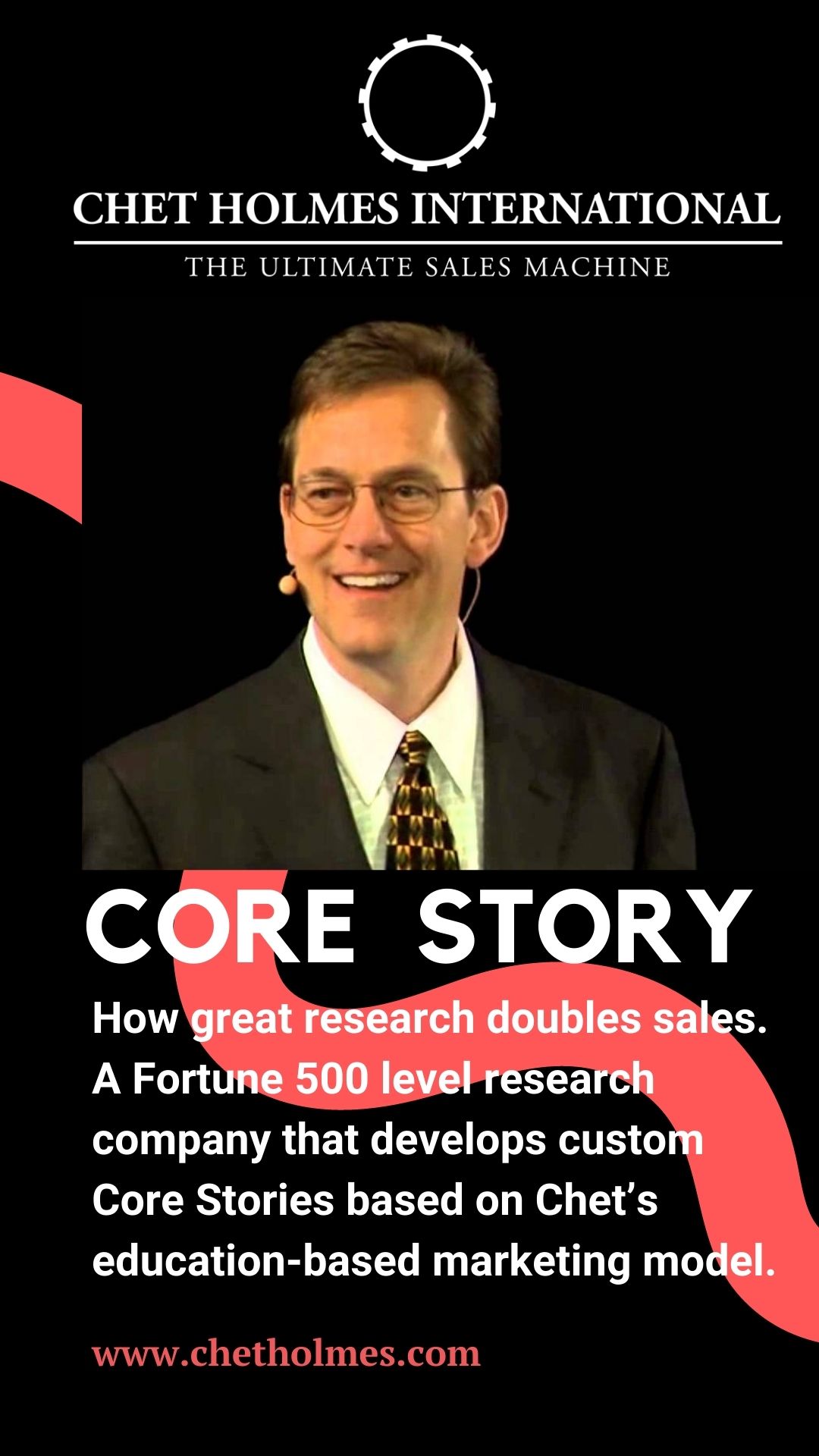
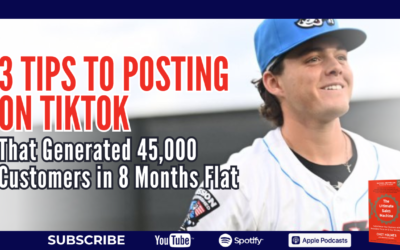
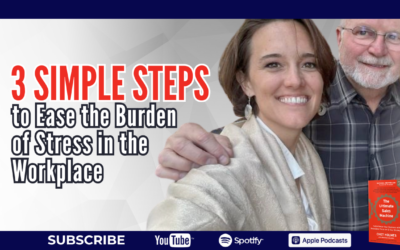
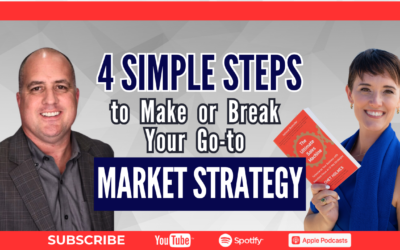
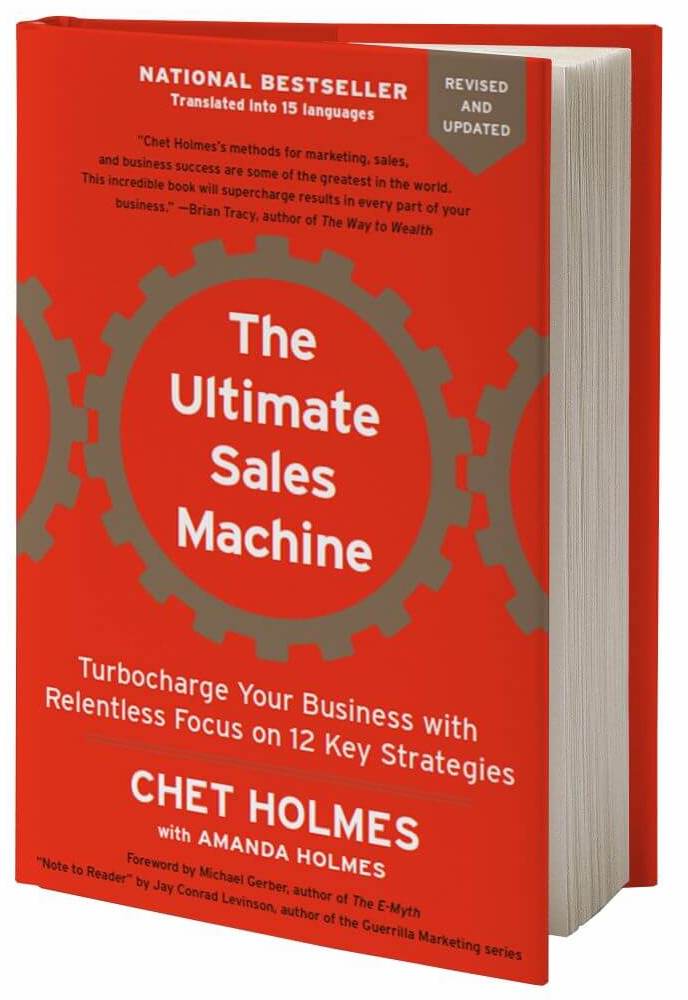 Get your pre-sale copy of the new edition of The Ultimate Sales Machine! (With special limited time bonuses)
Get your pre-sale copy of the new edition of The Ultimate Sales Machine! (With special limited time bonuses)
0 Comments